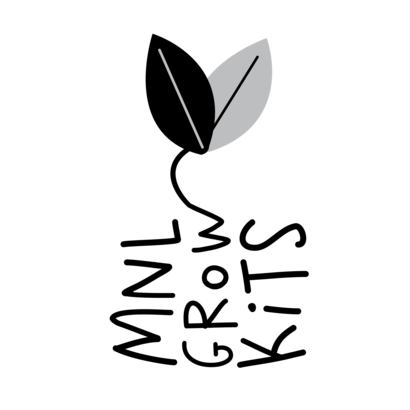How to grow your own Chives

1. Seeds & Soil Preparation
A. SOIL PREPARATION Put ample amount of soil to your chosen pot. Don’t forget to leave about a quarter of an inch or so of empty space in between the surface of the soil and rim of the pot to ensure proper growth. Press the mixture slightly to eliminate stubborn air pockets. Drench the mixture with water so it’s ready to provide the right environment for seeds to germinate.
B. SOW. Drop at least 6-8 seeds into the pot making sure they have ample space in between. Cover them very lightly with some soil at least 1-2mm deep. Water the pot very lightly to ensure good seed–to-mix contact.
C. SEAL & NURTURE. Leaving the pot completely open will allow too much heat as well as allowing moisture to escape, this may cause fewer germination or no germination at all. To prevent this, look for a clear plastic kitchen wrap or bag and spray it with some water. Be sure that the moist side of the plastic will sit above the soil. Go ahead and secure the plastic (moist side inside) with a rubber band or thread, acting as the pot’s lid. This will help it to retain the moisture that the seeds need to germinate properly. Twice daily, remove the wrap and sprinkle the pot with water especially when it’s hot.
2. Germination & Vegetation
A. TIME TO UNVEIL THEM. Remove the plastic wrap when the sprouts start to emerge (around 6-10 days after step 1). When you see the first green tendrils (tiny stems) push up through the soil, you can then remove the wrap. Germination is over, now the second stage starts. It’s called vegetative stage. In this stage leaves will form and it will gradually grow. You need to keep the soil moist to aid the growing plant. You may water it lightly at least two times daily preferably in the morning and late afternoon to maintain its moisture.
B. THINNING. Thin seedlings when they reach 2 inches in height. Pull out the weakest seedlings, for the strongest, healthiest plants you'll want just two to three chive seedlings per pot. Discard plucked out seedlings or you can try to transplant them into different pots, but you risk damaging the roots of the plant, which can adversely affect its rate of survival.
3. Hydration, Sun Exposure & Fertilization
A. HYDRATION & SUN EXPOSURE. Because the potting mix in a pot dries quickly; you will need to water oh so frequently. (Check by sticking your finger into the soil. If it feels dry an inch beneath the surface, it’s time to water.) Keep the soil damp but not soaked. Chives does best in a well-drained soil, and should not be subjected to standing water. Chives love the sun! It is ideal to place them on a spot that has full sun exposure or at least be subject to 6-8 hours of sunlight daily especially when they are about 3-4 inches tall already.
B. FERTILIZATION. That frequent watering tends to wash out nutrients from the pot’s soil, as well as some of it was already acquired by the plant so you will need to replenish it with fertilizer. Start to fertilize 14-21 days after emergence of sprout and every 10 days. Sprinkle at least 5-10 pcs of DURABLOOM Pellets to the soil for its nutrients requirements. You can crush the pellet and sprinkle indirectly around the Chives for faster absorption. It is a must that you water the pot after fertilizer application or apply it before you do your watering.You can also enhance the Chive’s development by giving it direct nutrients, dilute ½ teaspoon of DURABLOOM Foliar in 2 Litres of water and spray it to the leaves of the plant. This will boost root development and ensure that the plant will utilize all nutrients available in the potting media. You can do this once a week.
4. Transplanting, Harvesting & Consumption
A. EDIBLE FLOWERS. Chives produce lovely flowers that are edible. You can let the flowers bloom if you intend to eat them or cut them if you want tastier leaves. When flowers start to bloom it creates a hormone change that dramatically reduces the flavor of the leaves.
B. TRANSPLANTING. Chives can grow tall and wide. We strongly recommend that you transplant your chives when they are around 8-12 inches tall. You can either transplant your chives to an empty lot in your garden or to a bigger pot. Just simply place your chives (with the coco pot) to its new home and fill the spaces with soil.
C. HARVESTING. You can start harvesting when the leaves reach around 10-12 inches tall. Be sure to cut the leaves down to the base when harvesting (within 1-2 inches of the soil). You can harvest up to 3-4 times in a year.
C. USE / CONSUMPTION. It’s best to use your chives when they are fresh or frozen. You can freeze your chives in an airtight bag. Drying your chives is not ideal since chives lose their flavor when dried.
